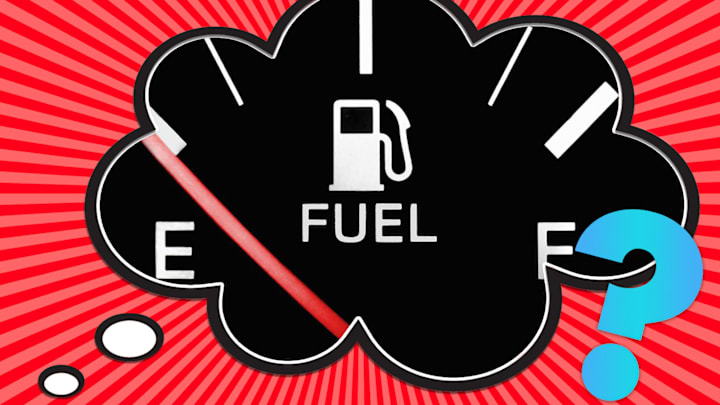Your car’s dashboard is home to a lot of information, but the one thing people tend to pay the most attention to is their fuel gauge. At max capacity, you’ve got no worries. With a half tank, you’re still good for most errands and commutes, if not a cross-country road trip.
But every now and again, your attention wanders and you find yourself looking down to see the dreaded E for empty. Obviously, you’re not about to disappear in a puff of fiery smoke right at that moment, but you might wonder how far you can push it. So, how long can you really drive once your gas light comes on?
While a universal answer would be nice, there really isn’t one. Being able to cruise for a while on empty depends on your car’s make and model, its fuel efficiency, and your speed. As a very loose general rule, the gas light will kick on when you’re at roughly 10 to 15 percent fuel capacity, according to car safety expert Robert Muñoz, who spoke with Reader’s Digest. That could mean one to four gallons of gas, depending on tank size. That translates to about 20 to 30 miles or as much as 50 miles in a larger vehicle.
While this sounds like a decent buffer, it shouldn’t be a license to ignore the gas light. Driving while you’re low on gas can potentially damage your fuel pump, which has to run hotter with less gas. A low tank can also begin moving more debris into the fuel filter. All that risk goes up the more often you drive with a near-empty tank. Worst case? You can stall or damage your car’s engine.
And no, it’s not a good idea to ignore the light if you plan to leave your car idle for weeks at a time. It’s best to have a full tank when keeping your car in storage. That makes it harder for moisture to build up in the tank, which can damage your vehicle’s fuel injection system.
Bottom line? If your tank is empty, fill up as soon as possible. If you can’t make it to a gas station within a few miles, you might consider pulling over when it’s safe and calling for assistance. And in the future, try not to let the light come on in the first place.
Have you got a Big Question you’d like us to answer? If so, let us know by emailing us at bigquestions@mentalfloss.com.
